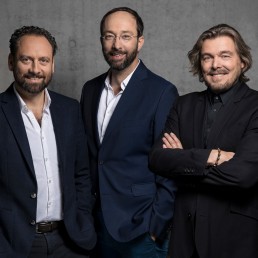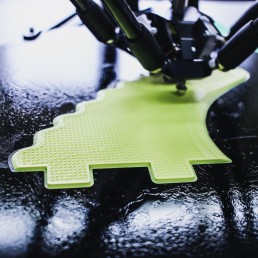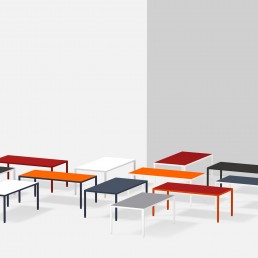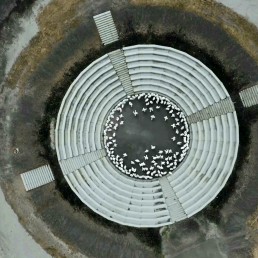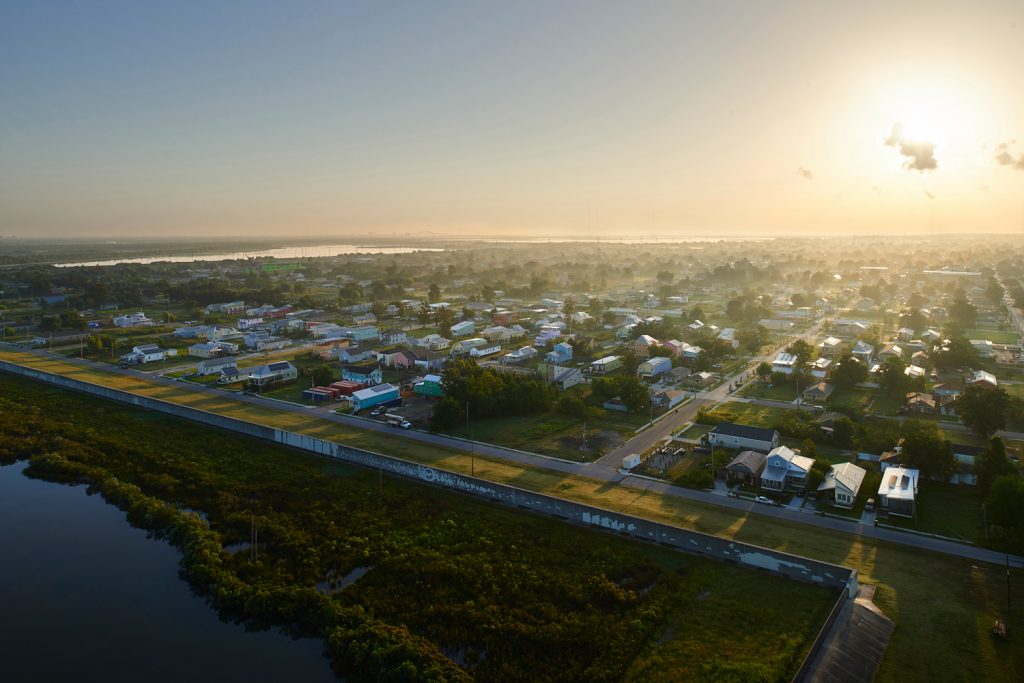
The Hybrid Office
How Can Architecture Be Even More Than Building Structures for a Client?
By Lars Krückeberg, Wolfram Putz, Thomas Willemeit, April 2017, Berlin
Since the origins of the profession, architects have been trained to analyze location, climate, legal parameters, construction, and technology. They use patterns and lifespans to understand history, budget, social context, and markets, before elaborating their proposal, ideally making a contribution to a better world, and formulating their thesis on beauty. However, architects are not free: they either always depend on a “client” and operate within the framework of a contract and a fee, or they are “service providers” for someone else who defines the project’s goals and targets. This constellation limits the idea of a “better world” to what is possible within the contracting party’s wishes, be they private or public clients.
In a global economy where maximum profit expectations determine the pattern of investment, where global networks of financing institutions and consultants have been trained to outsource responsibility, and where nations and states are facing worldwide economic pressure, the conditions for demonstrating solidarity are becoming even more difficult. The relationship between client and architect is out of balance, and the designer is all too often the servant of pragmatism and cold- hearted considerations. Architects are no longer in the driver’s seat, and their ability to shape the development of society has diminished accordingly. New, intelligent design ideas that could benefit society, redistribute profit, and serve collective goals, often remain within the academic realm — and often never see the light of day. Ten years ago, when GRAFT was asked to help re-build New Orleans after Hurricane Katrina, the architects — beyond just doing good work — could really contribute to the pursuit of a better world. The experience made clear that social innovation is based on self-initiative, not on waiting for someone else to hire you.
GRAFT became a founding partner of the Make It Right (MIR) Foundation in New Orleans, initiated by Brad Pitt. MIR has engaged a group of high-profile and influential international architects including David Adjaye, Frank Gehry, MVRDV, Morphosis, and Shigeru Ban, in order to develop affordable house typologies for low-income residents by incorporating sustainable construction and design.
Since the founding of MIR, architects have become more than just planers: they have co-established foundations, participated in developing financial strategies, and invent- ed and realized energy systems for low-cost housing. They have tapped into material production, learned how to apply for grant money and government R&D funds, developed ways of working with impact investors, and initiated start-ups that they continue to support through their advisory boards. They have grown accustomed to risking both time and money, even failing dramatically at times, but understand today more than ever that if you don’t do it yourself, and aren’t prepared to take the more arduous path to realize your big ideas, nobody is going to do it for you.
The discussion about the role and responsibility of the architect is nothing new, though. Many see the Bauhaus movement, especially its revolutionary Dessau era (less than five years!), as a distinct point of origin — modernity’s “Big Bang” moment. During this brief period, the question of the architect’s primary goal (to achieve beauty, or social justice?) was hotly contested. Walter Gropius wanted to liberate craftsmanship from pure reproduction and historicism, and at the same time aimed to reintroduce hand-crafted design to fully explore the promise of industrial mass production for social good. Gropius, who himself had designed and realized affordable housing schemes, appointed the socialist Hannes Meyer as his successor, two years after moving to Dessau. From then on, following Meyer’s “Volksbedarf statt Luxusbedarf” philosophy (or, “the needs of the people before the need for luxury”), the Bauhaus was committed to a primary purpose, and industrialization was accepted as a tool for achieving a greater good. Soon, even Gropius feared Meyer would turn the Bauhaus into a communist institution rather than an architectural school, and Meyer was replaced by Mies van der Rohe in 1930.
For the next two years, Mies, with his motto “less is more”, was without a doubt more concerned about design than social justice. Mies tried to keep the Bauhaus out of politics as much as possible, but by 1931, had to face ever-growing pressure from the Nazi regime. He moved the Bauhaus to Berlin, a city of international cultural relevance, in hopes of saving the school’s intellectual autonomy, but it was finally closed by the Nazi regime only five months after its relocation. Independence and autonomy remained an unfulfilled promise, and during the Nazi regime the concept of dissociation of form and function seemed like a self-deception of modernity.
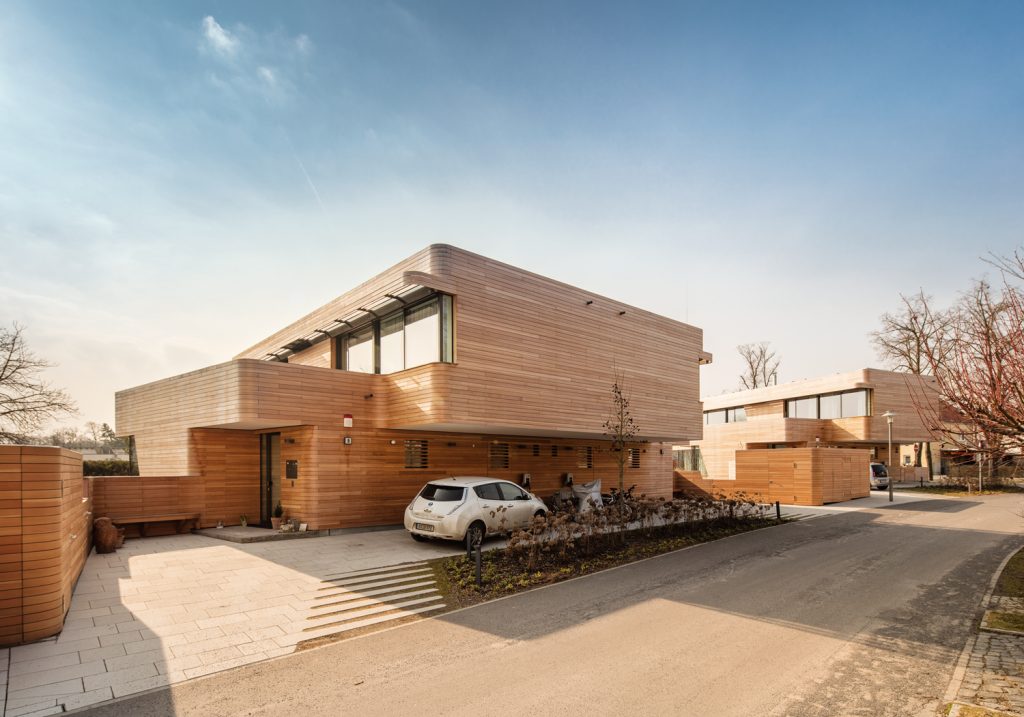
Gropius’s intention to combine fine arts and crafts, and to graft them onto each other in a single schooling principle, was revolutionary and inspiring, but also marked the beginning of a struggle on the debate of autonomy versus dependency in architectural expression that still persists today — for example, in the discussion around the appointments of Venice Biennale directors and Pritzker laureates in recent years. But is “quality of architecture” versus “social and common benefit” really the right question to ask? Must it be so black or white? This dialectic may be one reason why our profession has become more specialized and less influential. For GRAFT, the most relevant architects of our time are those who do not ask whether beauty or purpose are of higher priority, but try to combine both in equal measure. The most inspiring architects are not those who wait to be asked, but those who take the initiative and create projects of high aesthetic quality for the common good.
Oscar Niemeyer, an architect who worked on both wealthy and low-income projects, for big cities and the smallest communities, explained this idea very simply: “I always like to repeat that architecture is not important. Architecture is just a pretext. Important is life and important is man. This remarkable being with soul and emotions, that is hungry for justice and beauty.” Niemeyer designed incredibly beautiful buildings for the cultural elite as well as the uneducated layperson — and more often than not because he wanted to, not because he was paid to.
Another outstanding architect, who focused on environmental and social activism early on, striving for sustainable production through the principle of “more for less”, was Buckminster Fuller. In an effort to try and “make the world work”, he addressed some of the planet’s biggest questions. The goal of his pioneering solutions was always to improve human life, making him one of the key innovators of the 20th century. Harmony between urban development and nature was also the goal of the Italian-American architect Paolo Soleri, who in 1970, began constructing the experimental town of Arcosanti in Arizona to demonstrate the impact of smart urban development and environmental protection. Although his idea of “arcology”, the combination of architecture and ecology, never went mainstream, he influenced future generations, ourselves included, with his utopian approach.
In 1993, Sam Mockbee and his architecture students at Auburn University began designing and building homes and community buildings for disadvantaged communities in Hale County, Alabama. They named their movement “Rural Studio”, and it is still active today, years after Sam Mockbee’s death. Their inexpensive constructions were made from reclaimed lumber and bricks, even hay, cardboard, or old bottles and license plates, making them sustainable and rooted in local identities. Following in their footsteps, other initiatives and networks such as Architecture for Humanity and Habitat for Humanity have likewise practiced activism in the field of architecture.
Of the many public housing projects by Álvaro Siza, his most famous and successful project is probably his Quinta de Malagueira development in Évora, Portugal. His architectural approach included an additional layer of infrastructure that takes the form of “an elevated network of conduits that distributes water and electricity […] much in the manner of a miniature aqueduct” (Ellis Woodman, The Architectural Review, 27 January 2015). The low-rise courtyard houses were built on a low budget, publicly subsidized, and became home to 1,200 families.
Steven Holl proposed a similar strategy to address the problem of slums and informal settlements all over the world. In his publication “Anchoring” (1989), Holl published sketches of two parallel aqueducts providing water and energy supply for informal and self-made housing while also defining a public space between them. Individual shacks and houses can be successively attached using the aqueduct as a structural component as well as a water and energy supply. The idea of the partly built house was picked up by Elemental and Alejandro Aravena, who first proposed the concept of half-finished houses in Iquique, Chile, and then went on to build a series of settlements which are well known for their potential to be extended and “completed” by the homeowners themselves.
One aspect of contemporary architecture that is becoming ever more apparent is the failure of the modernist idea of “one construction technology fits all”. Since the 1970s, we have seen a renaissance of several regional construction methods and building traditions. For example, building with earth and bamboo, or with recycled materials such as wastepaper or Cradle-to- Cradle certified materials. Often, the aim of research and development into alternative construction methods and materials is to address needs at the BoP, and is driven by the idea of combining social benefit and formal expression. We see this in the work of Shigeru Ban, Francis Keré, Nina Maritz, and many others.
It is not a specialized professional practice, but a view on life, that addresses the architectural needs in every one of us. Inspiration comes in all forms and from all professions. Activism is, by nature, the fusion of disciplines and talents from all aspects of the task at hand — a grafting of worlds. ■

